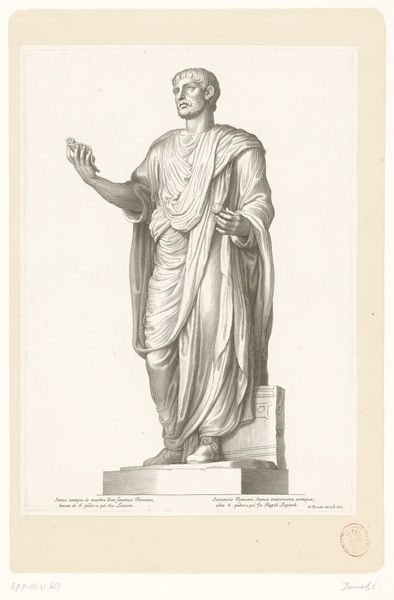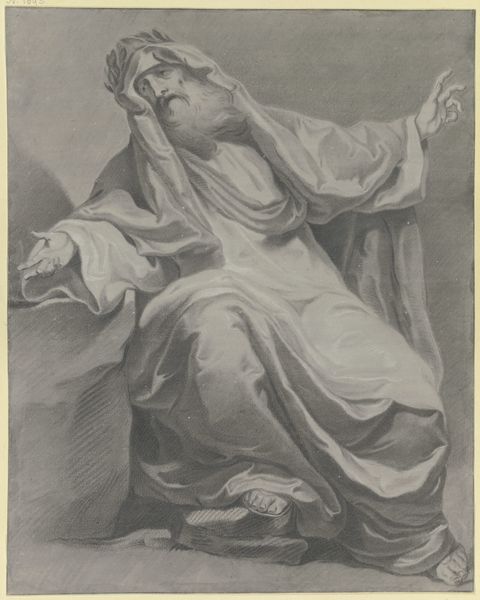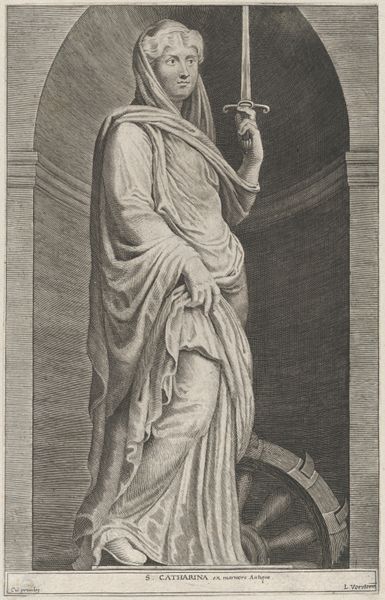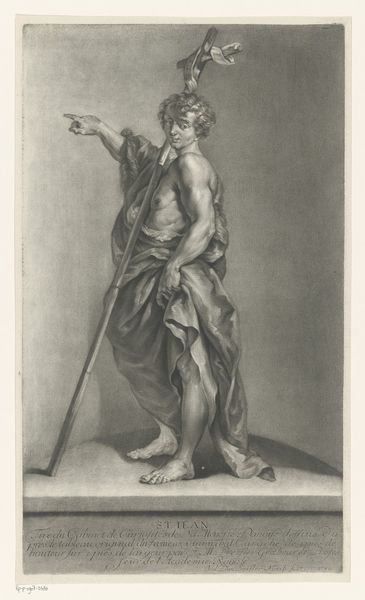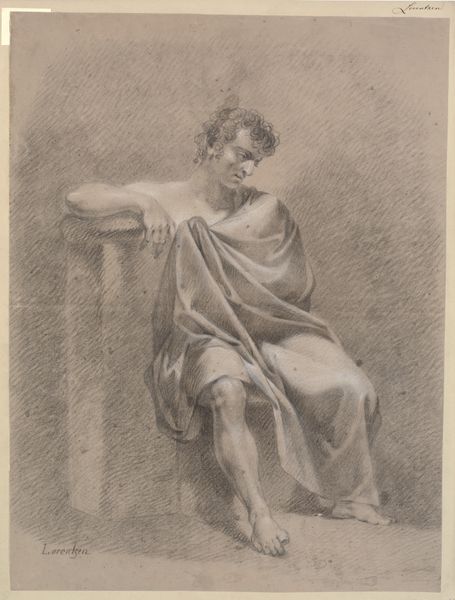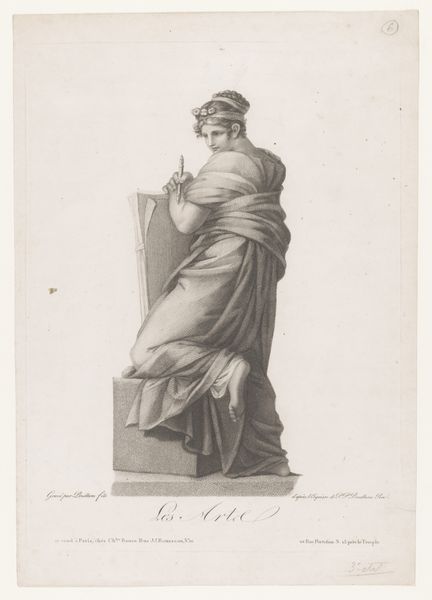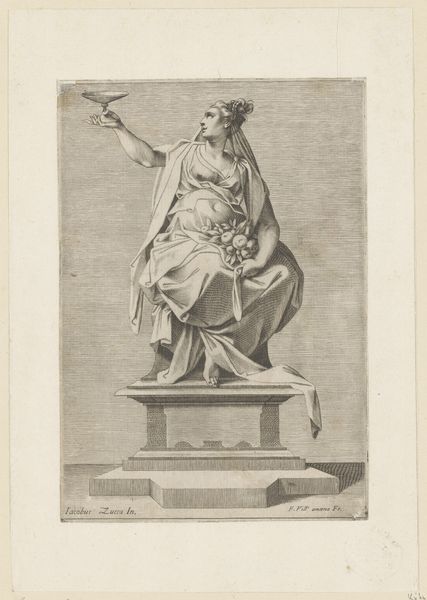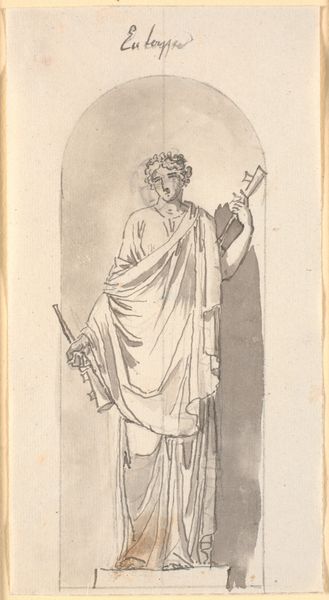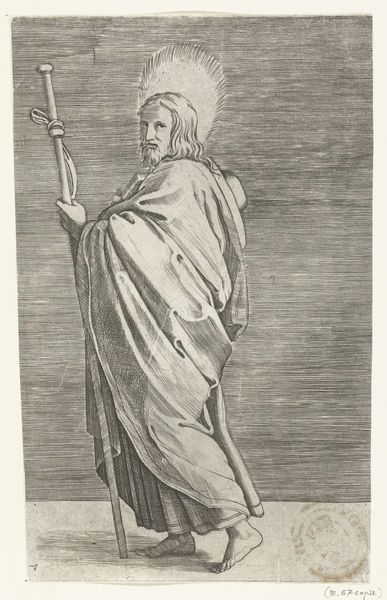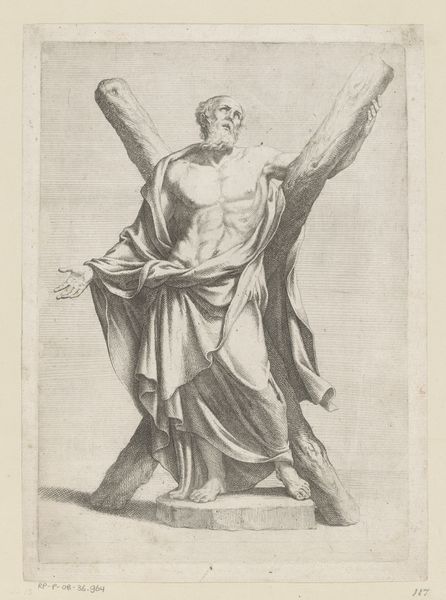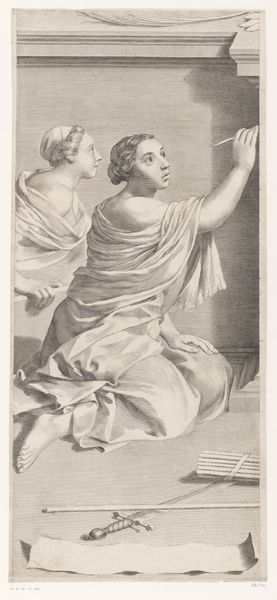
drawing, pencil, pen
#
portrait
#
pencil drawn
#
drawing
#
neoclacissism
#
light pencil work
#
pencil sketch
#
pencil drawing
#
pencil
#
pen
#
portrait drawing
#
history-painting
Dimensions: height 387 mm, width 253 mm
Copyright: Rijks Museum: Open Domain
Curator: This sketch possesses such quiet authority, doesn’t it? Editor: It does. There's something commanding about the gaze lifted toward the light. Before us is "Apostel met inktpot en veer," or Apostle with Ink Pot and Feather, rendered in 1756 by Valentin Daniel Preissler. The artwork is composed using pencil and pen, presenting us with a portrait style of art. Curator: Note how the apostle stands on what looks like a minimalist stage, elevated both physically and metaphorically. The pen held so deliberately signifies, to me, the transmission of ideas, even divine revelation. Is he receiving guidance, or ready to write? Editor: Perhaps the most immediate point of access comes through his garment. Preissler seems intent on using light and shadow in the folds of the robes to guide the viewer's eyes. He is, after all, an apostle—a figure with the social and religious duty of influencing others through words. And one could argue that Neoclassicism valued, above all, figures of historical importance. Curator: You're absolutely right about influence; it’s central here. In this drawing, Preissler captured that moment of thoughtful reflection before action. Look at how all the visual lines lead upwards towards his eyes, it certainly seems he is receiving an impulse from something above himself, perhaps what the Romantics would refer to as “genius.” Editor: What strikes me about the presentation of this historical subject is Preissler’s success in navigating this space. We get the sense of a solemn moment; but this is no theatrical baroque saint! It is an intimate, thoughtful rendering. The intention appears more civic than dogmatic. Curator: Yes! A very careful distinction to make! It's an intimate study of a man who represents a much larger history of ideas and artistic influence. Editor: It’s rewarding to consider Preissler’s apostle as an exploration of the role of figures within historical narratives, as a bridge between divinity and text. Thank you for illuminating the symbolism. Curator: The pleasure was all mine. This dialogue helps underscore the quiet complexity radiating from Preissler’s subject and composition.
Comments
No comments
Be the first to comment and join the conversation on the ultimate creative platform.
